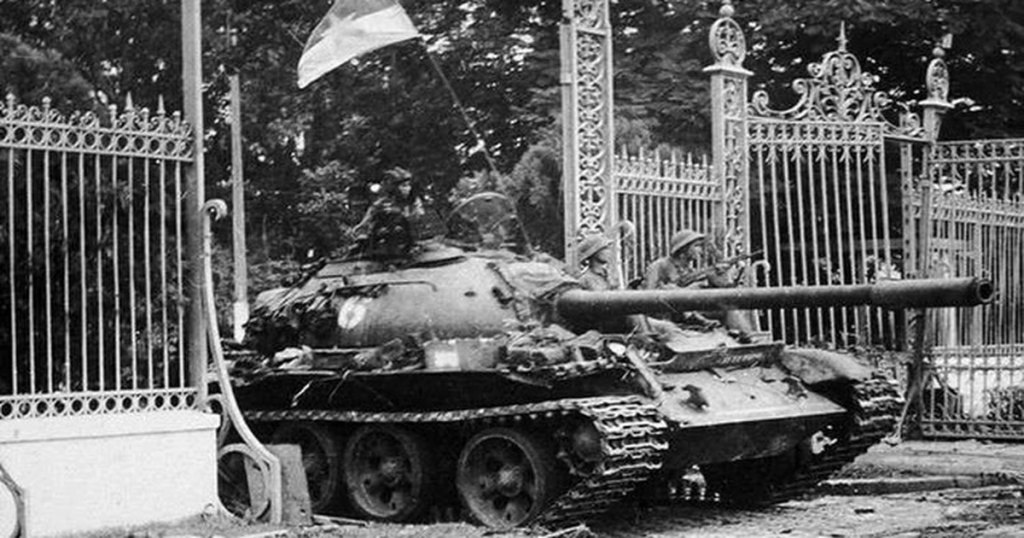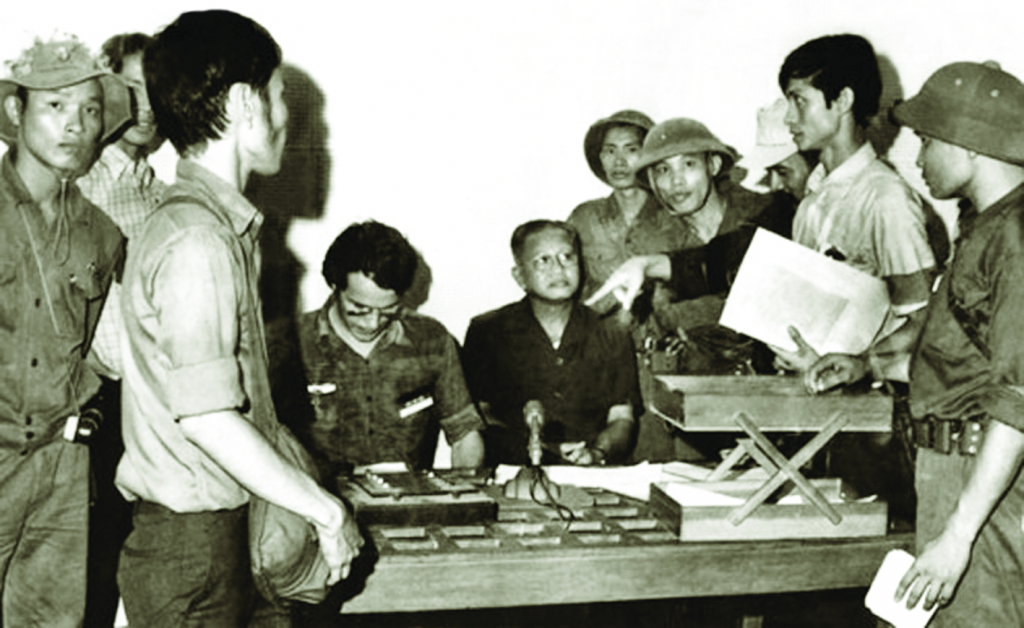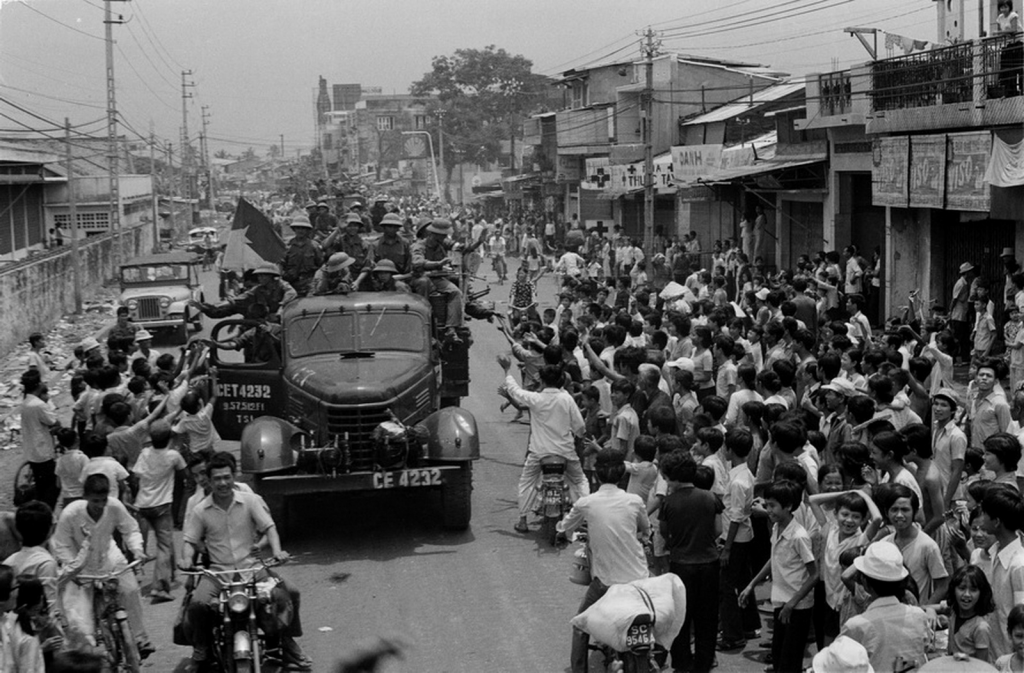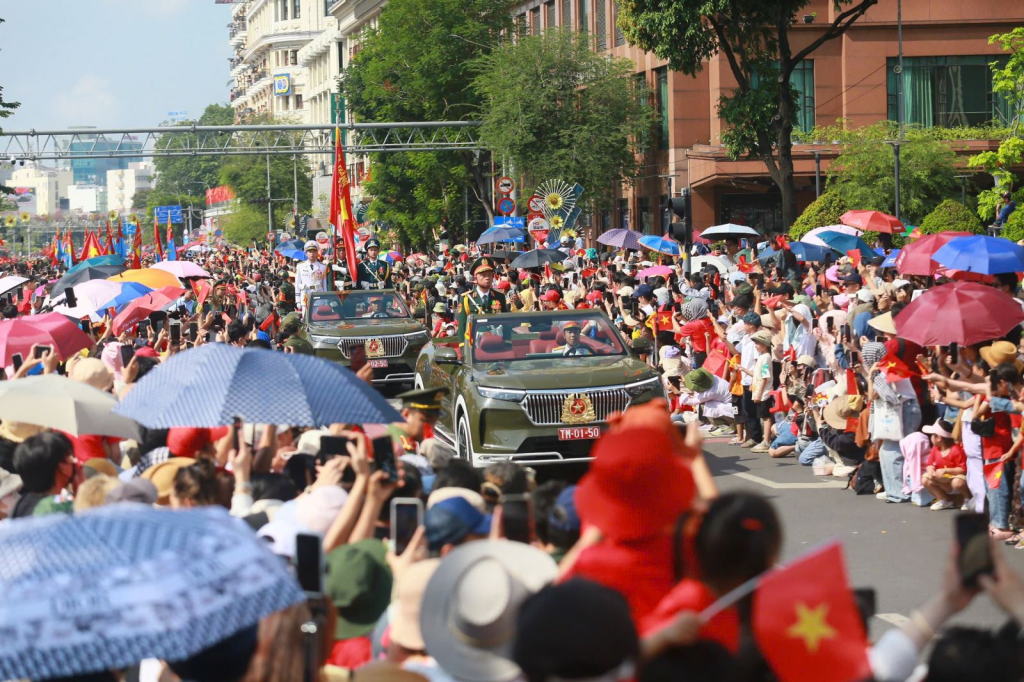April 30, 1975, marked the final day of the Vietnam War and a pivotal moment in Vietnam’s history. The capital of the Republic of Vietnam — Saigon — was liberated by revolutionary forces, resulting in the unconditional surrender of the South Vietnamese government. The U.S.-backed regime collapsed, and the country was set on the path to reunification under the flag of the Socialist Republic of Vietnam.
1. 5:00 AM – Revolutionaries Seize the Headquarters of the Joint General Staff
At dawn, forces from the Liberation Army captured the headquarters of the South Vietnamese military’s Joint General Staff — a strategic nerve center of the ARVN (Army of the Republic of Vietnam). This dealt a decisive blow to any remaining hopes for coordinated military resistance.
2. 5:30 AM – Radio Liberation Calls for Surrender
Radio Liberation issued a direct appeal: “Saigon government troops must surrender unconditionally.” The airwaves also broadcast urgent calls for the Saigon populace to remain calm and support revolutionary efforts. These announcements encouraged peaceful surrender and helped limit unnecessary bloodshed.
3. 6:00 AM – Tanks Enter Saigon from Northwest and West
Columns of tanks from the Liberation Army advanced deep into Saigon from the northwest (via Go Vap) and from the west (via Binh Chanh). These strategic routes enabled forces to approach both military and political command centers simultaneously.
4. 7:00 AM – Radio Liberation Repeats the Call to Lay Down Arms
A second broadcast emphasized the demand for unconditional surrender and urged remaining military and government forces to cease fighting. The psychological impact of repeated announcements contributed significantly to lowering resistance across the city.
5. 9:00 AM – Liberation Forces Control Tan Son Nhat Airport
After intense overnight artillery strikes, Tan Son Nhat International Airport fell into revolutionary hands. This strategic victory ended all U.S.-backed evacuation efforts, grounded ARVN aircraft, and confirmed that no external help would arrive.
6. 10:00 AM – Liberation Troops Control National Radio Station
Securing the National Radio Station (Đài Phát thanh Quốc gia) allowed the revolutionary government to control public communication across the south. Broadcasts soon replaced government propaganda with liberation music and revolutionary announcements.
7. 10:15 AM – Tanks Reach the Independence Palace

The iconic moment began when the lead tank, T-54 number 843 from Brigade 203, smashed through the gates of the Independence Palace (also known as the Presidential Palace). Crowds watched in awe as tanks rolled into the heart of the old regime’s power.
8. 10:24 AM – Flag of Liberation Raised Over the Palace
A soldier from the Liberation Army climbed onto the palace balcony and raised the red flag with a yellow star — the flag of the Socialist Republic of Vietnam. This act marked the symbolic end of the Republic of Vietnam.
9. 10:45 AM – President Dương Văn Minh Surrenders
Inside the palace, President Dương Văn Minh — who had assumed office just 48 hours prior — officially declared the unconditional surrender of the South Vietnamese government. His brief statement was:

“I declare that the government of the Republic of Vietnam has completely collapsed and is ready to transfer power to the Provisional Revolutionary Government.”
10. 11:30 AM – President Minh Broadcasts Surrender Message
President Minh’s statement was recorded and broadcast over national radio, confirming to both Saigon residents and the world that the war was officially over. His words ensured that remaining government forces stood down.
11. 12:00 PM – Full Control Over the Palace and Ministries
Liberation Army forces took full control of the Independence Palace, major ministries, and government offices. Soldiers ensured that former officials disarmed peacefully. Files, documents, and communication equipment were secured.
12. 1:00 PM – Liberation Forces Secure Central Saigon
Major roads and intersections — including Lê Lợi, Đồng Khởi (formerly Tự Do), and Nguyễn Huệ boulevards — were patrolled by Liberation troops. Banners, red flags, and revolutionary slogans appeared everywhere. Traffic was minimal, but tension gave way to cautious hope.
13. 2:00 PM – Civilians Welcome Revolutionary Forces
Crowds began gathering along the streets, waving flags and offering flowers. Students, workers, and monks appeared with peace banners. Many civilians had hidden their support for years; now, they could express it freely.
14. 3:00 PM – Revolutionary Symbols Replace Old Regime Icons
Portraits of Hồ Chí Minh were displayed across government buildings. Statues and banners of the Republic of Vietnam and its leaders were taken down. Stores resumed limited operations. Schools and pagodas rang bells in celebration.
15. 5:00 PM – Entire Saigon Controlled Peacefully by Liberation Forces

By the evening, all of Saigon — from Cholon to Gia Định — was securely under the control of the Provisional Revolutionary Government. No significant resistance remained. Peace had returned, and so had the dream of reunification.
A Nation Reunified

These 15 events, unfolding hour by hour, did not just change a capital city — they changed a nation. April 30, 1975, was the climax of a war that spanned over three decades, from anti-colonial resistance to civil conflict. For millions of Vietnamese, it was the day their long struggle ended in victory. For others, it marked exile, uncertainty, or loss. Regardless of perspective, it was the beginning of a new chapter for Vietnam.
The events of this day remain etched in the memory of the people. The tanks, the flag, the surrender, and the songs of liberation are not only historical moments — they are living memories of Vietnam’s journey toward unity and independence.

